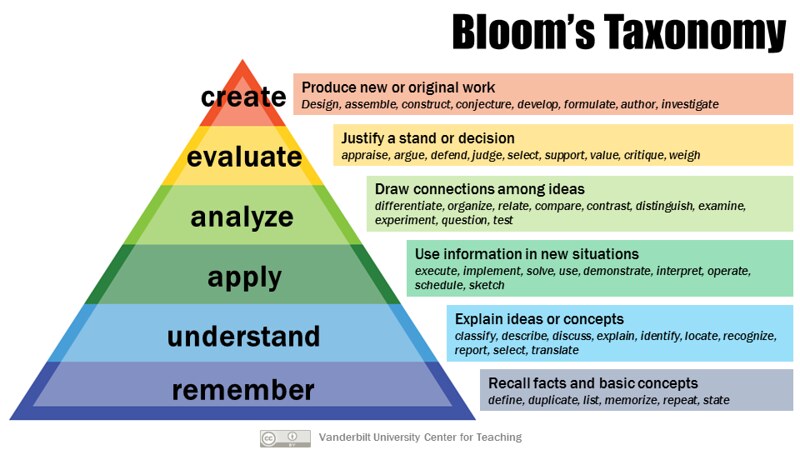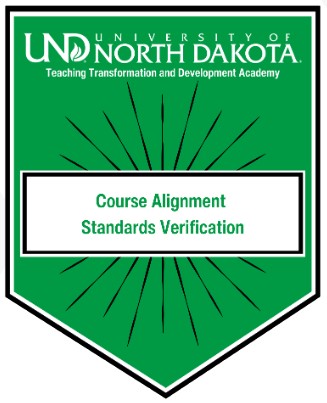Course Design
TTaDA offers a number of resources to help you design new courses more effectively, as well as improve existing courses. Our team has broad experience bringing pedagogical principles into campus classrooms, blended classes, and fully online courses.
Course Preparation
Course design is similar to planning a Superbowl party. Just as you need to think about things like the guest list, invitations, food, and decorations, course design involves organizing everything needed for the course. The first step is to define clear, measurable, and student-focused learning outcomes. Once you have those outcomes, the next step is to organize and break down the content so that students can gradually work toward achieving those outcomes. A good question to ask is, "What do my students need to do in order to reach the course outcome?"
To help you with designing your course, please complete the Course Alignment Map.
Course Alignment Map
Enroll in the course "Creating a Quality Course Map". There is a new cohort available each month!
Learning Outcomes
Learning outcomes should not exist in isolation; they need to be connected to one another and to the unit’s overall topic, avoiding unnecessary repetition. Clearly defining learning outcomes is an essential part of effective teaching. When you clearly communicate your expectations to students and provide opportunities for practice, they are more likely to demonstrate their understanding on assessments or major assignments. Essentially, this approach ensures that students learn what you intend for them to know. Without clear guidance on what is expected, students may feel uncertain or frustrated, especially if their assumptions about what to focus on turn out to be incorrect.
Learning outcomes help faculty to:
- Determine the key focus of the course: Out of all possible topics, which ones are most important to teach?
- Choose the most effective teaching methods: Teaching students to think critically requires a different approach than teaching them to recall information.
- Select appropriate ways to assess learning: Should a project or final exam be the best way to evaluate students’ understanding?
- Clearly communicate expectations to students: What decisions have been made regarding the points above, and how will these be shared with the students?
Learning outcomes help students to:
- Build a strong link between teaching and learning, fostering collaboration between instructors and students.
- Reduce uncertainty in the student's learning process.
- Empower students to fully grasp and excel in the course material.
How to Write Outcomes
- Subject - Who is the audience?
- Action Verb - What must learners know how to do? This should be observable and measurable.
- Object - What knowledge does the learner need to acquire?
Action Verbs
Blooms Taxonomy is well-known and widely received as a taxonomy of learning.
View a list of action verbs with examples of activities and assessments for help drafting outcomes.

The Course Alignment Mapping Tool is another tool to assist you in matching assessments and activities to your course outcomes. This tool integrates Quality Matters and Bloom's Taxonomy Revised and will allow you to make choices based on Cognitive Complexity.
Course Review
If you would like your course reviewed by one of our Instructional Designers, follow the steps below.
- Complete the Course Review Worksheet. This should be completed by the Faculty, Chair or Dean requesting the Course Review.
- Once the Course Review Worksheet is received, a review team of 3 Instructional Designers will be put together and begin the review process using the Course Alignment Rubric. This process can take 2-4 weeks.
- Once the Course Review has been completed by the Review Team, a report with information on which standards were met or not met as well as suggestions for improvement will be sent to the individual who submitted the Course Review Worksheet.
- Optional: A consult to discuss the course review with the requestor and review team.
Course Alignment Verification Mark
The Course Alignment Verification Mark indicates that a course is fully aligned. This
means that the module outcomes, assessments, activities, learning materials, and tools
all work together and support one another, ensuring that each element of the course
serves a clear purpose without unnecessary tasks.
To earn the Course Alignment Verification Mark, you must complete the Course Alignment Verification Review Worksheet. A course map must be attached to the worksheet for the review process. The course will be evaluated based on Quality Matters Alignment Standards, and a digital badge will be awarded if the standards are met. This badge can be shared in your syllabus, promotional materials, or on platforms like LinkedIn.
